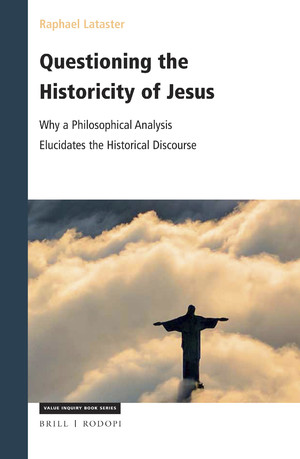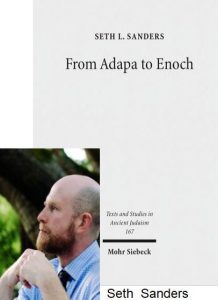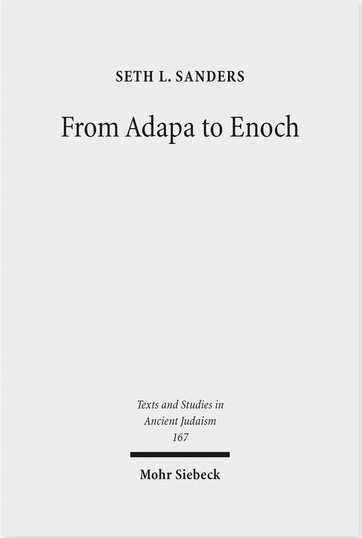As I read each chapter or section of Raphael Lataster’s book, Questioning the Historicity of Jesus, I wrote about it here, but now that I have read the concluding pages I discover that Lataster anticipated some of the points I made along the way. Especially this one, the final footnote on the final page:
The poor criticisms offered indicate people that have already decided that mythicism must be wrong, simply because they find the conclusion distasteful, without knowing what the best arguments are, let alone how to argue against them.
(Lataster, p. 452)
There have been several responses to the work of Carrier and myself which cannot be dealt with in detail here; I shall point out their failings elsewhere. This includes the articles and blog posts by Christina Petterson, Daniel Gullotta, John Dickson, Michael Bird, James McGrath, Brenda Watson, and Simon Gathercole (and Robert Greg Cavin and Carlos A. Colombetti, who responded to Stephen Law’s agnosticism). None of them add anything substantial to the debate, mischaracterising our work and typically focussing on attacking the person instead of the argument. Additionally, every single one of them completely ignored our most salient points.
(Lataster, p. 463)
 Responses by Daniel Gullotta and Simon Gathercole have been addressed in-depth on this blog. Lataster’s criticisms are entirely on target. A decade ago a colleague of Philip R. Davies (to whom Lataster’s book is dedicated) spelled out in detail the unscholarly tactics of “conservative scholarship” in addressing the so-called “minimalists” who dared question the historicity of the Davidic kingdom of Israel. Niels Peter Lemche’s description of those tactics applies just as much to the critics of those who question the historicity of Jesus:
Responses by Daniel Gullotta and Simon Gathercole have been addressed in-depth on this blog. Lataster’s criticisms are entirely on target. A decade ago a colleague of Philip R. Davies (to whom Lataster’s book is dedicated) spelled out in detail the unscholarly tactics of “conservative scholarship” in addressing the so-called “minimalists” who dared question the historicity of the Davidic kingdom of Israel. Niels Peter Lemche’s description of those tactics applies just as much to the critics of those who question the historicity of Jesus:
Critical scholars should be critical enough to realize the tactics of the conservative scholars: never engage in a serious discussion with the minimalists [substitute mythicists]. Don’t read Davies, Thompson, and Lemche [substitute Doherty, Brodie, Carrier, Lataster]; read books [or articles] about them!
For a more detailed account of Lemche’s criticisms see The Tactics of Conservative Scholarship (according to J. Barr & N-P. Lemche).
As we have seen, Lataster mentioned in the opening of his book names of mainstream scholars who accept the legitimacy of doubting the historical existence of Jesus. More names are added in his final chapter.
Lataster’s concluding call for agnosticism concerning the historicity of Jesus contains all the punch of the preceding 440 pages. His argument has been three-fold:
- the case for historicity (part 1, chapters 1 to 3) demonstrated the frequently unscholarly and generally fallacious efforts of recent attempts by mainstream scholars to present an argument for the historical existence of Jesus, and how such efforts effectively (unintentionally) support the case for agnosticism;
- the case for agnosticism (part 2, chapters 4 to 6) demonstrated the hollowness of the foundations (both source foundations and the methods by which certain inferences are drawn from these sources) for any assertion that Jesus did exist
- the case for mythicism (part 3, chapters 7 to 9) demonstrated that one does not need a historical Jesus to explain the evidence we have for Christian origins and that Christianity began with a belief in a heavenly (not historical) Jesus is indeed plausible.
Lataster has made it abundantly clear where the sound scholarly approach lies:
But look at what Casey did. Look at what Ehrman and the others do. These prominent historicists strangely and illogically appeal to the majority, appeal to authority, appeal to possibility, and, worst of all, appeal to innumerable sources that don’t even exist, in order to prove something that is supposed to be very obvious, something that is allegedly borderline insane to deny. This must stop. Scholars cannot be allowed to continue building on previous scholarship in the field, when the foundations – such as the appeals to hypothetical sources – are highly conjectural to begin with. If we ahistoricists argued like they do, we would be overlooked (well, more than we already are), and rightly so. These historicists did not argue in a transparent probabilistic fashion; they merely declared that their hypothesis is true or almost certainly true, and that anybody who’s anybody agrees with them. Contrast that with the approaches of Carrier and myself. Who are the ones trying to posit a wealth of non-existing foundational sources, whilst disregarding the impact of numerous actually existing sources? And who are the ones simply applying and asking others to apply transparent probabilistic reasoning to the sources that we do actually have access to?
This all should make it easy to figure out which scholars have an agenda, and which scholars merely go where the evidence leads. I’ll leave it to you to decide if you prefer the arguments of the people that used evidence, and logic, and had no real desire to deny the existence of a Historical Jesus, or if you prefer the wild and unsubstantiated claims about near-infinite non-existing sources, and just so happen to arrive at conclusions that placate their ultimately Christian benefactors. I strongly encourage philosophers and historians, and even other scholars, from outside the field to continue to scrutinise the methods and conclusions of these Biblical specialists. Several educated outsiders – and even some insiders – so far have done so and discovered that the emperor has no clothes.
(Lataster, p. 450)
Exactly. As for mythicists being driven by some need to debunk the existence of Jesus, such an accusation is entirely without evidential support and actually flies in the face of the evidence.
Calculations
Continue reading “Review part 10: Questioning the Historicity of Jesus / Lataster (Conclusion)”






